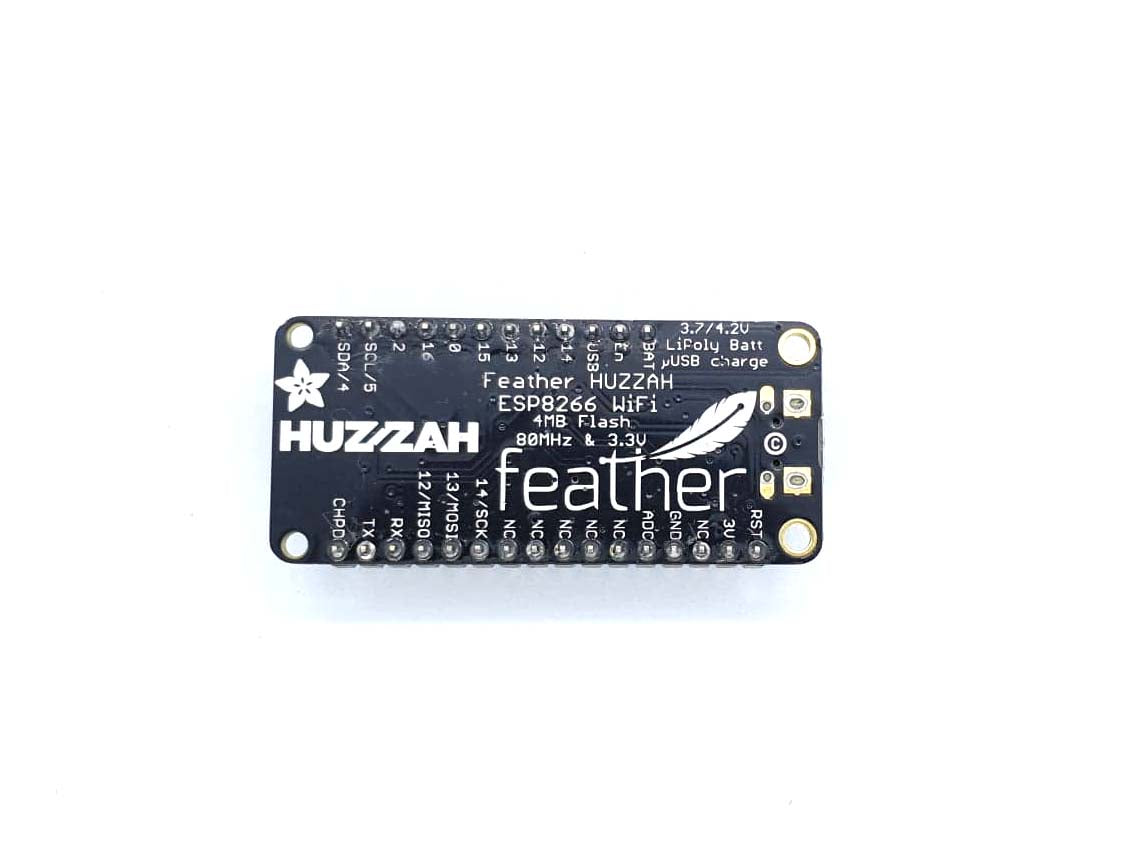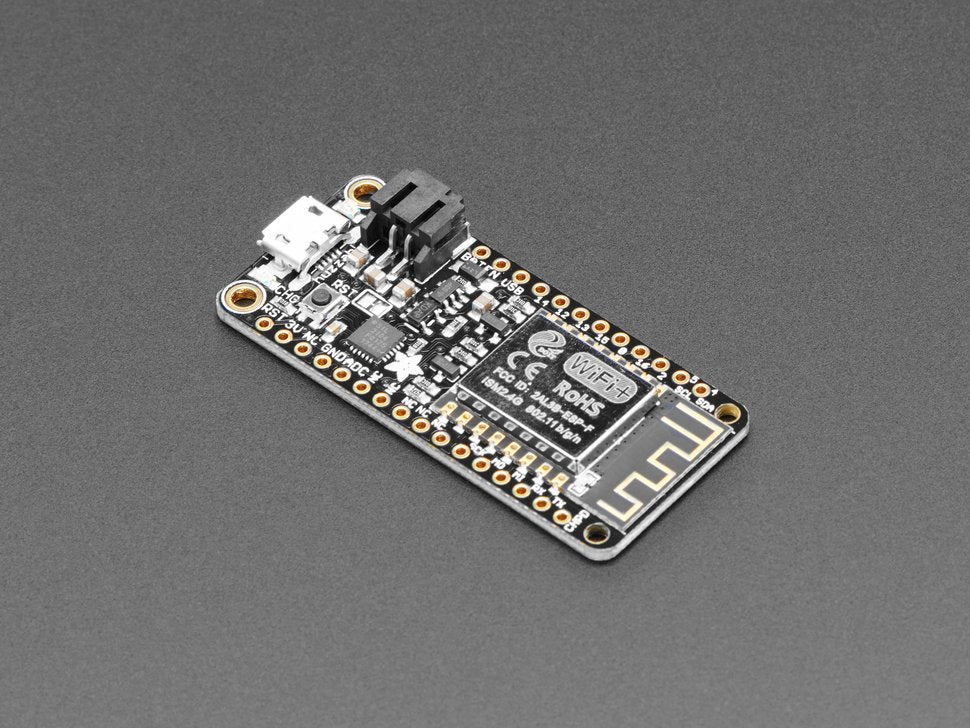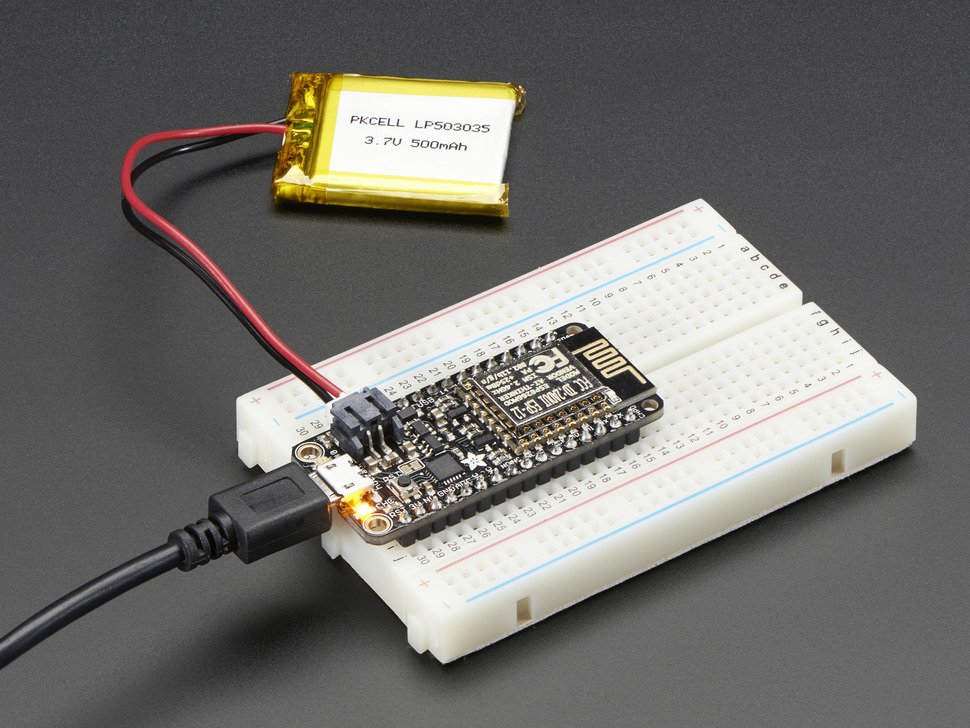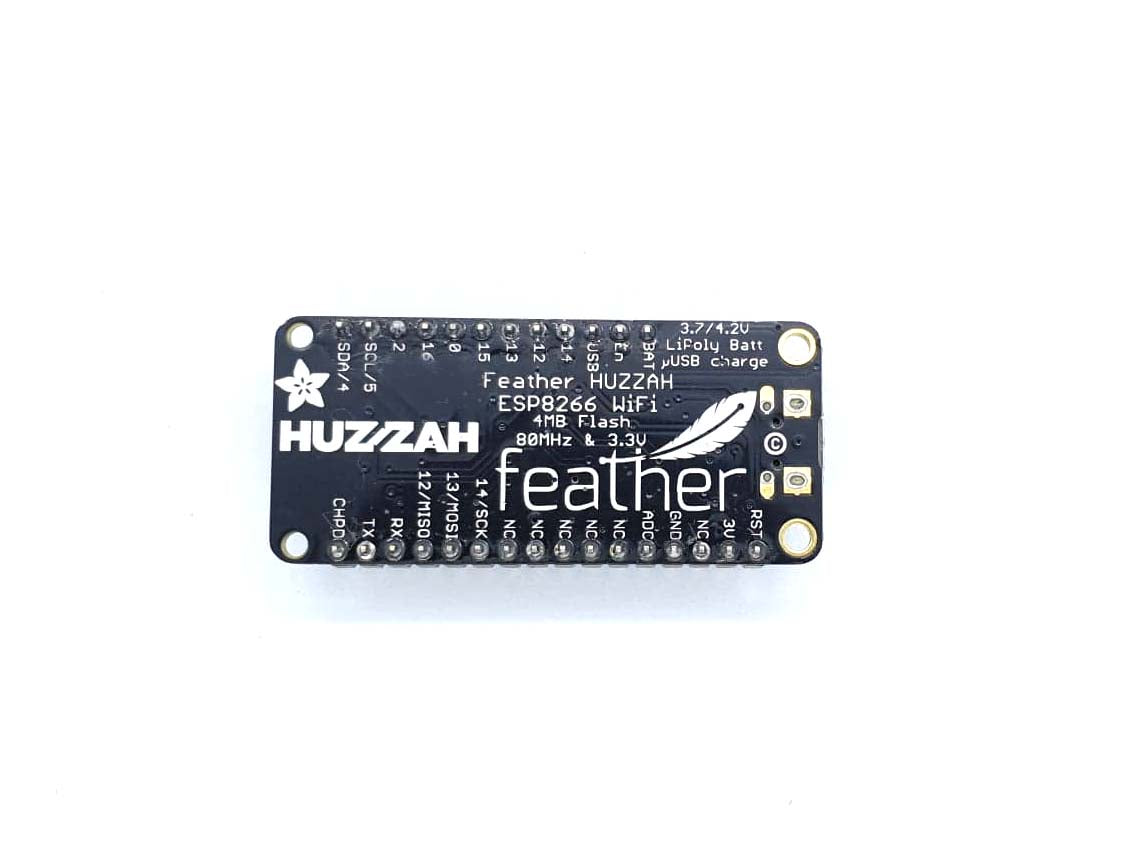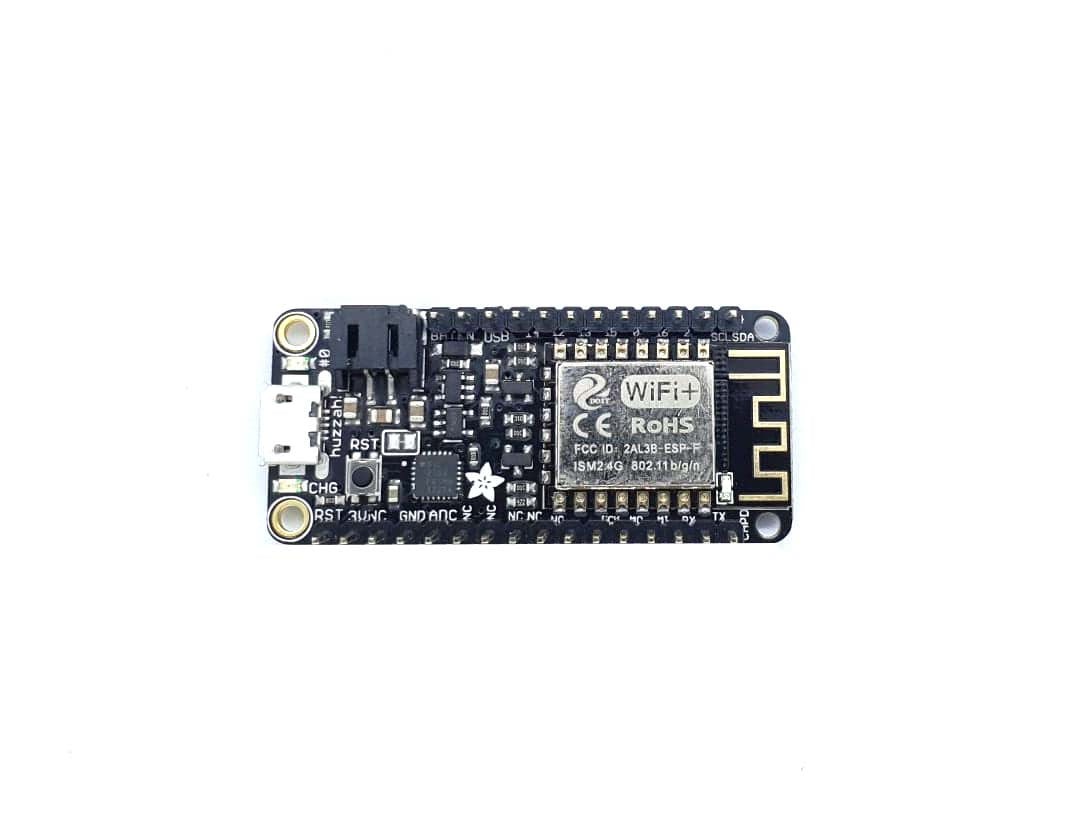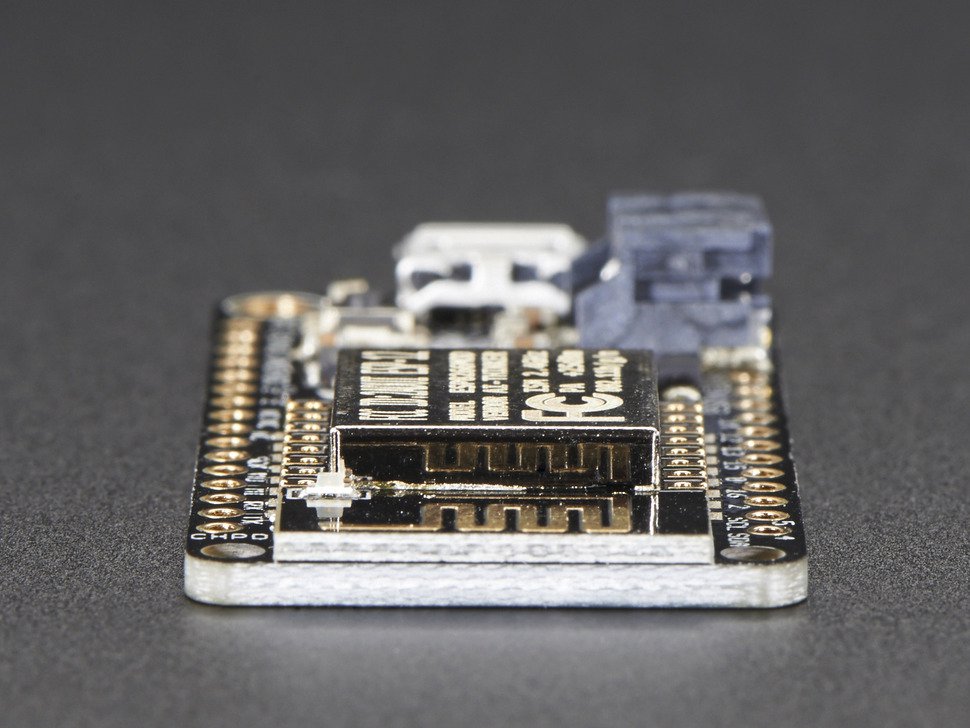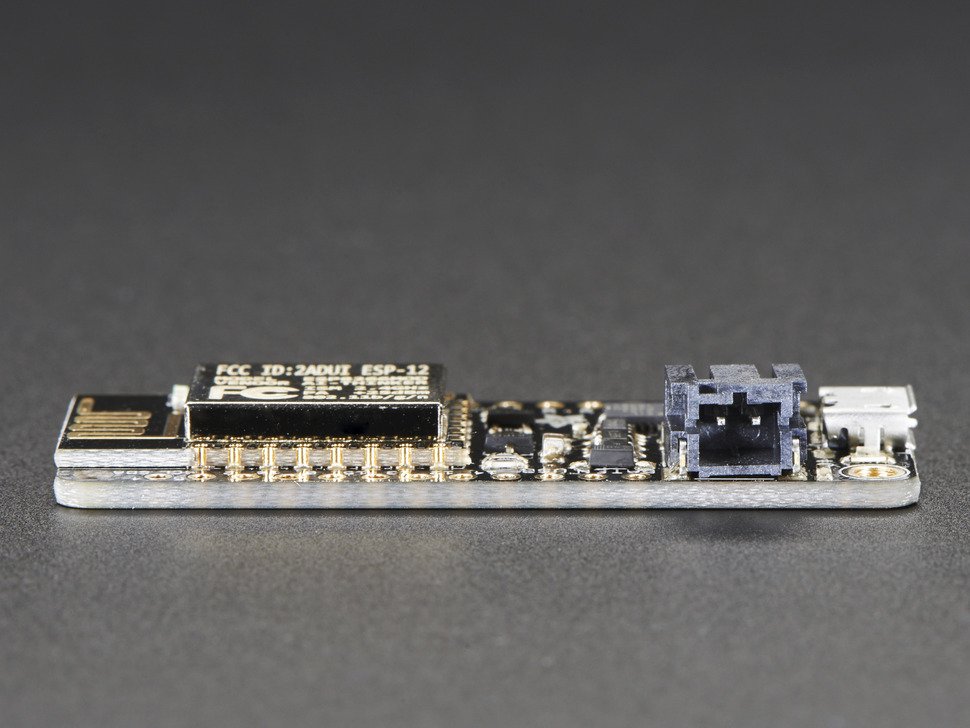Feather WiFi HUZZAH ESP8266 Adafruit
Feather WiFi HUZZAH ESP8266 Adafruit - Feather WiFi HUZZAH ESP8266 Adafruit. Feather is the new development board from Adafruit, and like its namesake, it is thin, light, and lets you fly! We designed Feather to be a new standard for portable microcontroller cores.
This is the Adafruit Feather HUZZAH ESP8266 - our take on an 'all-in-one' ESP8266 WiFi development board with built-in USB and battery charging. It's an ESP8266 WiFi module with all the extras you need, ready to rock! We have other boards in the Feather family, check'em out here.
At the Feather HUZZAH's heart is an ESP8266 WiFi microcontroller clocked at 80 MHz and at 3.3V logic. This microcontroller contains a Tensilica chip core as well as a full WiFi stack. You can program the microcontroller using the Arduino IDE for an easy-to-run Internet of Things core. We wired up a high-quality SiLabs CP2104 USB-Serial chip that an upload code at a blistering 921600 baud for fast development time. It also has auto-reset so no noodling with pins and reset button pressings. The CP2104 has better driver support than the CH340 and can do very high speeds without stability issues.
To make it easy to use for portable projects, we added a connector for any of our 3.7V Lithium polymer batteries and built in battery charging. You don't need a battery, it will run just fine straight from the micro USB connector. But, if you do have a battery, you can take it on the go, then plug in the USB to recharge. The Feather will automatically switch over to USB power when its available.
Here's some handy specs!
- Measures 2.0" x 0.9" x 0.28" (51mm x 23mm x 8mm) without headers soldered in
- Light as a (large?) feather - 9.7 grams
- ESP8266 @ 80MHz with 3.3V logic/power
- 4MB of FLASH (32 MBit)
- Built in WiFi 802.11 b/g/n
- 3.3V regulator with 500mA peak current output
- CP2104 USB-Serial converter onboard with 921600 max baudrate for speedy uploading
- Auto-reset support for getting into bootload mode before firmware upload
- 9 x GPIO pins - can also be used as I2C and SPI
- 1 x analog inputs 1.0V max
- Built in 100mA LiPoly charger with charging status indicator LED, can also cut a trace to disable the charger
- Pin #0 red LED for general purpose blinking. Pin #2 blue LED for bootloading debug & general purpose blinking
- Power/enable pin
- 4 mounting holes
- Reset button
Comes fully assembled and tested, with a USB interface that lets you quickly use it with the Arduino IDE or NodeMCU Lua. (It comes preprogrammed with the Lua interpretter) We also toss in some header so you can solder it in and plug into a solderless breadboard. Lipoly battery and USB cable not included (but we do have lots of options in the shop if you'd like!)
Frequently asked questions about WiFi Module ESP8266 ESP-12F
Q1: What is ESP8266 - ESP8266 vs. ESP32
The ESP8266 caused quite a stir on release due to its connective capabilities and high processing power at a comparatively low price point. Its single-core 32-bit processor can run at up to 80 MHz, with 32KB instruction RAM and cache RAM, along with 80 KB user-data RAM. Most evaluation boards and modules featuring the ESP8266 also come with external QSPI Flash storage, typically 4MB.
Fantastic for tasks including WiFi and small numbers of GPIO pins, ESP8266 modules are very cheap and fit for most IoT and Smart Home projects. They come both as standalone development boards and add ons for other microcontrollers without native Wi-Fi support.
The ESP32, also made by Espressif, is the larger sibling of the ESP8266. It shares most of the ESP8266's features but has a dual-core processing unit, more GPIO access, and the option to use Bluetooth 4.2 and BLE connectivity. ESP32 chips can be used to add connectivity to other microcontrollers but make powerful standalone units too. Much like the ESP8266, they tend to come as part of a module or evaluation board.
Q2: What can The Adafruit Feather Huzzah with ESP8266 do?
What can you do with an Adafruit Feather Huzzah ESP8266? Given the I/O, connectivity, and portable power options, it's probably easier to list the projects it is not good for. It's also difficult to judge what is best from a coding perspective, given the option to use the Arduino IDE, Lua, MicroPython, or address the chip's bare metal using the Espressif ESP8266 SDK. Nevertheless, here are a few example projects showing off the Adafruit Feather HUZZAH ESP8266.
Q3: Why some of the pins, the Huzzah stops working while connecting devices.
The ESP8266 uses some of the pins as 'boot mode' pins so on boot they must be set to certain values:
- CH_PD (EN) should be always pulled high (it will disable the entire module if low)
- RST should be always pulled high (it will disable the entire module if low)
- GPIO 0 sets whether the boot loader is active, it must be pulled HIGH during power up/reset for the user program to run. If it's pulled LOW, it will activate the boot loader. The built-in red LED on #0 pulls it up
- GPIO 2 must be pulled high on power up/reset.
- GPIO 15 must be pulled low on power up/reset.
TECHNICAL DETAILS
- 23mm x 51mm x 7.2mm / 0.9" x 2" x 0.28"
- Weight: 6.2
Feather WiFi HUZZAH ESP8266 Adafruit
Feather WiFi HUZZAH ESP8266 Adafruit
Low stock: 1 left
Product Code
SKU:2821
Couldn't load pickup availability


